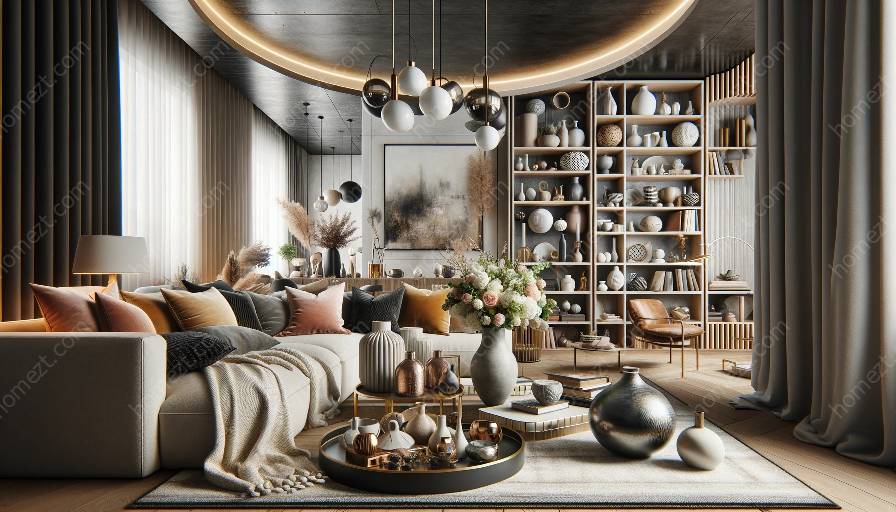Living in a small space doesn't mean sacrificing style and comfort. When it comes to accessorizing a small living space, it's important to carefully consider the available space, functionality, and personal style to create a harmonious and functional environment. In this comprehensive guide, we'll explore the key considerations for accessorizing and decorating small living spaces, providing you with expert tips and inspiring ideas to maximize the potential of your compact home.
1. Understand the Available Space
Assess the space's dimensions and layout to determine the available space for accessories without cluttering the area. Take measurements and consider the placement of furniture and other essential elements to visualize the potential areas for accessorizing.
Consider the height, width, and depth of shelves, wall space, and other potential display areas to optimize the use of space effectively. Understanding the available space will guide your choices in selecting appropriate accessories that complement the small living space without overwhelming it.
2. Embrace Multi-Functional Accessories
Opt for accessories that serve a dual purpose, such as storage ottomans, nesting tables, or wall-mounted shelves. Multi-functional accessories not only maximize space but also offer practical solutions for storing essentials while adding style to the room.
Choose furniture and accessories with built-in storage features to help keep the small living space organized and clutter-free. Look for innovative designs that prioritize both functionality and aesthetics to make the most of the limited space available.
3. Light and Color Considerations
Utilize light, bright colors, and strategic lighting to create the illusion of a larger space. Accessorizing with mirrors, light-colored rugs, and sheer curtains can enhance the feeling of openness and brightness in a small living space.
Consider the color scheme and how certain accessories can either complement or contrast with the existing decor. Selecting accessories in light or neutral tones can help create an airy and spacious ambiance, while incorporating pops of color can add visual interest and personality to the room.
4. Scale and Proportion
Pay attention to the scale and proportion of accessories to ensure they are in harmony with the size of the space. Avoid oversized or bulky accessories that can make the room feel cramped and limited. Opt for smaller-scale items that provide visual impact without overpowering the area.
Consider the scale of furniture and accessories in relation to the size of the room, ensuring that each piece complements the overall composition. Balancing proportions will create a cohesive and visually appealing space, where accessories seamlessly integrate with the decor.
5. Personal Style and Functionality
Infuse your personal style into the accessorizing process while prioritizing functionality. Select accessories that reflect your personality and taste, but also serve a practical purpose in the small living space.
Whether it's artwork, textiles, or decorative accents, choose accessories that resonate with your aesthetic preferences and contribute to the overall functionality of the space. Aim for a harmonious blend of style and utility to elevate the visual appeal and livability of your small living area.
6. Declutter and Edit
Regularly assess and edit your accessories to prevent the space from feeling overcrowded. Embrace minimalism and strategic placement to prevent clutter and maintain a sense of openness in a small living space.
Be selective in choosing accessories and consider the impact of each piece on the overall composition. Removing unnecessary items and periodically reevaluating the arrangement of accessories can help maintain a clean, organized, and visually pleasing environment.
Conclusion
Accessorizing a small living space requires thoughtful consideration of space, functionality, and style. By understanding the available space, embracing multi-functional accessories, utilizing light and color effectively, paying attention to scale and proportion, infusing personal style, and maintaining a clutter-free environment, you can create a small living space that is both visually appealing and practical.
Through strategic decorating and accessorizing choices, you can transform your small living space into a cozy and inviting oasis that reflects your individuality and maximizes the potential of every square foot.






































